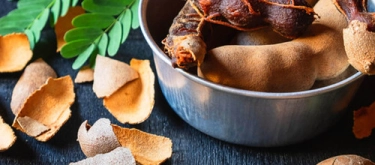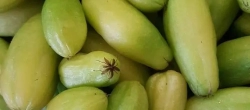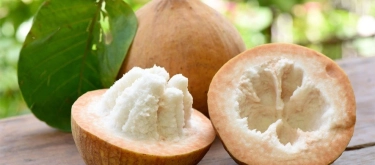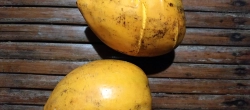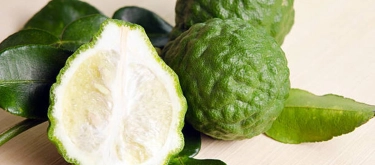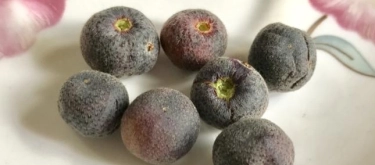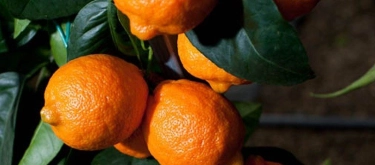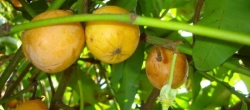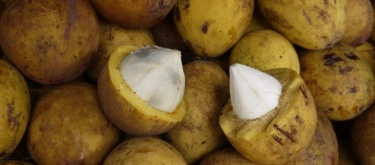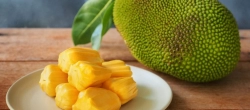Chalta (Dillenia indica): Taste Profile, Aroma, Benefits and Health Risks
Chalta, commonly known as elephant apple, is a fruit-bearing tree native to South and Southeast Asia, particularly India, Bangladesh, and Thailand. The fruit is widely used in regional cuisines for its distinct sourness and fibrous texture, making it a popular ingredient in curries, chutneys, and pickles. Beyond its culinary applications, chalta has a long history in traditional medicine, valued for its purported anti-inflammatory and digestive benefits.
Chalta (Dillenia indica) is generally safe for consumption but may cause mild allergic reactions in individuals sensitive to tropical fruits. Due to its high acidity, excessive consumption can lead to digestive discomfort, including acid reflux and irritation of the gastrointestinal lining.
What does Chalta (Dillenia indica) taste like?
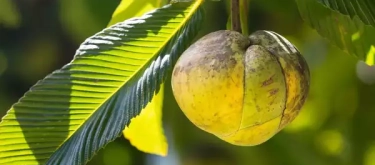
Complete Sensory Description
Taste
Chalta is characterized by a pronounced sourness due to its high concentration of organic acids, primarily citric and malic acids. When unripe, the fruit has an intensely sharp, almost mouth-puckering acidity. As it ripens, the acidity slightly mellows, revealing subtle earthy and woody undertones. Its sourness is comparable to tamarind, though with a more fibrous and astringent profile.
Aroma
The aroma of chalta is mild yet distinctive, with earthy and slightly floral notes. When cut open, the fruit releases a faintly woody and citrusy scent, which intensifies during the cooking process.
Texture
Chalta’s texture is fibrous and gelatinous, with a sticky pulp that clings to numerous seeds. The fruit’s flesh is dense and tough when raw but softens significantly when cooked, turning into a smooth, almost jam-like consistency.
Appearance
The fruit is large and round, typically 10–12 cm in diameter, with a thick, leathery green to yellowish outer skin. It has a segmented, ridged surface, making it visually distinctive. The pulp inside is pale yellow, interspersed with numerous hard seeds embedded within the fibrous matrix.
In-depth Flavor Analysis
The dominant flavor compounds in chalta include citric and malic acids, responsible for its characteristic sourness. The fruit also contains a range of polyphenols, including tannins, which contribute to its mild astringency. The presence of trace sugars is minimal, making chalta overwhelmingly tart rather than balanced. When cooked, heat breaks down some of the acidic compounds, allowing underlying umami and slightly sweet notes to emerge. The fibrous texture also plays a role in how the flavor is perceived, as it slows the release of acidity on the palate.
Varieties and Culinary Applications
While chalta does not have many recognized cultivated varieties, slight regional differences exist in fruit size and acidity levels. In culinary applications, chalta is widely used in:
- Curries and stews – imparts a tangy depth to fish and meat dishes, particularly in Bengali and Assamese cuisines.
- Chutneys and pickles – enhances flavors with its acidity and textural complexity.
- Juices and sherbets – used in traditional beverages for its refreshing sourness.
- Jams and preserves – combined with sweeteners to create sweet-sour spreads.
- Traditional medicine – consumed as an herbal remedy for digestive ailments and inflammation.
Selection and Storage
When selecting chalta, choose firm, heavy fruits with an even green or yellowish hue. Avoid overly soft or damaged specimens, as they may be overripe or spoiled. Store fresh chalta at room temperature if unripe, or refrigerate for up to a week once ripened. Processed forms, such as dried or preserved chalta, should be kept in airtight containers to maintain their shelf life.
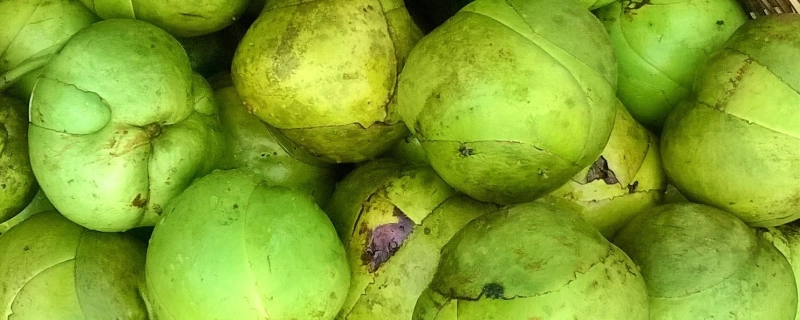
Nutritional Insights
Chalta is a nutrient-dense fruit with the following key components:
- Vitamin C – supports immune function and skin health.
- Dietary fiber – aids digestion and promotes gut health.
- Antioxidants (polyphenols & tannins) – may contribute to anti-inflammatory and cardioprotective benefits.
- Calcium and phosphorus – essential for bone strength and metabolic functions.
Expert Insights & Culinary Tips
- Balancing acidity – Pairing chalta with sweet elements like honey or jaggery counteracts its sharp sourness.
- Cooking methods – Slow cooking enhances its natural umami-like depth, making it ideal for rich curries.
- Pre-treatment – Blanching before use helps reduce excessive astringency and tough fibers.
- Culinary pairings – Works well with fish, mustard-based sauces, and coconut-infused dishes.
Interesting and Curious Facts
- The name “elephant apple” comes from the fact that wild elephants frequently consume the fruit.
- Chalta trees are often planted for their ornamental value and dense foliage.
- In Ayurveda, the fruit and bark are used for their purported digestive and anti-inflammatory properties.
Harm and Dietary Considerations
- High acidity – Excessive consumption may lead to stomach irritation or acid reflux.
- Allergic reactions – Some individuals may develop mild allergic responses, particularly to the fruit’s sap.
- Digestive concerns – The fibrous pulp can be difficult to digest in large quantities.
Religious Dietary Considerations
Chalta is generally permissible in most religious dietary frameworks, including Hinduism, Islam, and Buddhism. There are no known restrictions associated with its consumption in major religious traditions.
Final Thoughts & Sensory Journey
Chalta is a distinctive tropical fruit known for its intense sourness and fibrous texture. It serves as a key ingredient in various South and Southeast Asian cuisines, offering a bold acidity that enhances savory and sweet dishes alike. Beyond its culinary uses, its potential health benefits further contribute to its cultural significance. Whether used in curries, chutneys, or traditional medicine, chalta provides a complex and rewarding sensory experience.
Resources
- Indian Journal of Traditional Knowledge – Studies on the medicinal properties of Dillenia indica.
- Handbook of Tropical Fruits – Nutritional and culinary insights.
- Ayurvedic Materia Medica – Historical significance of chalta in traditional medicine.
